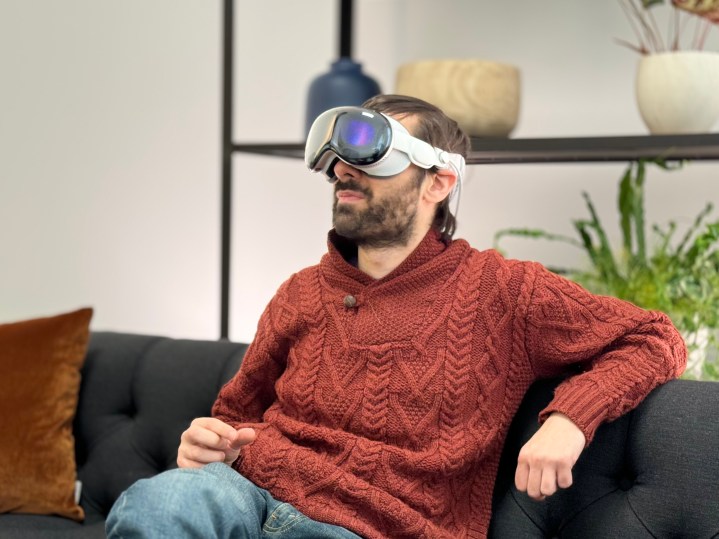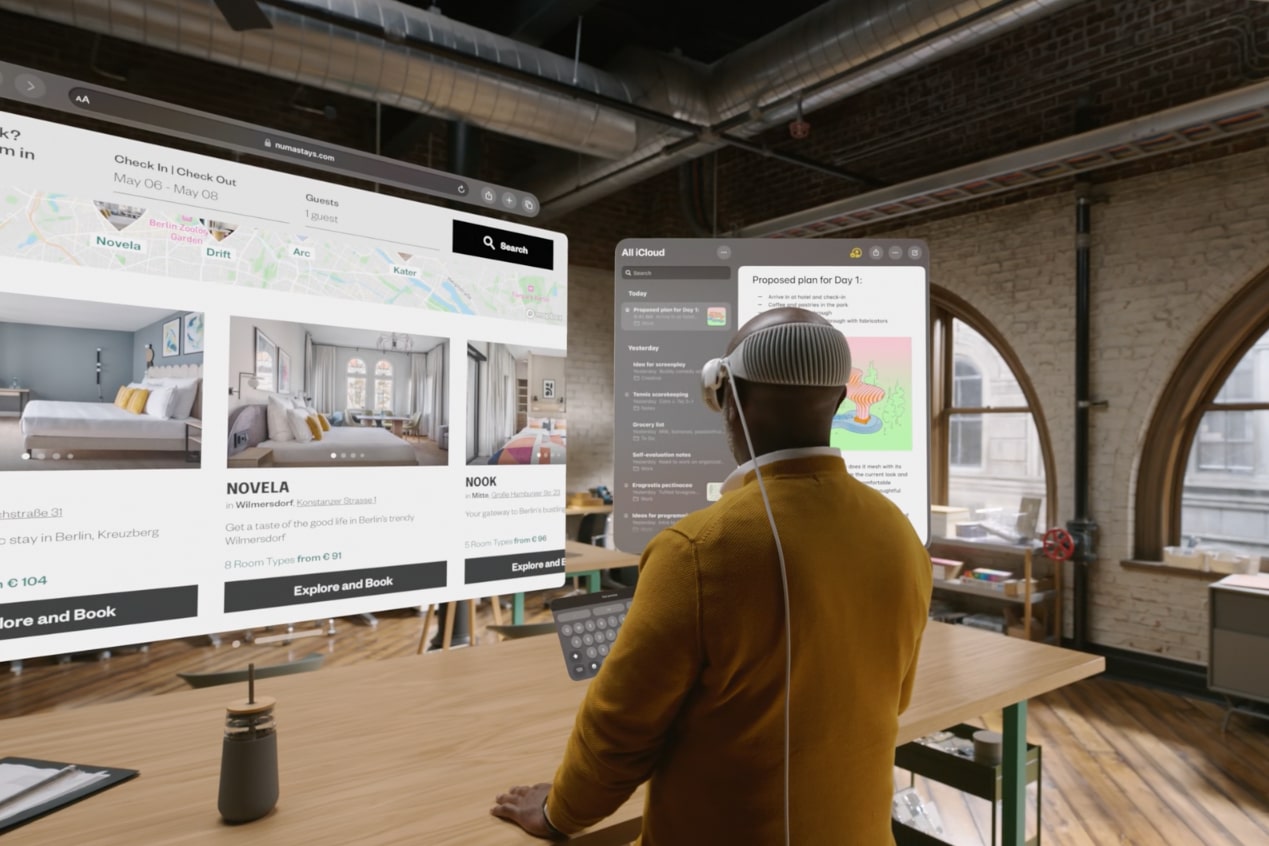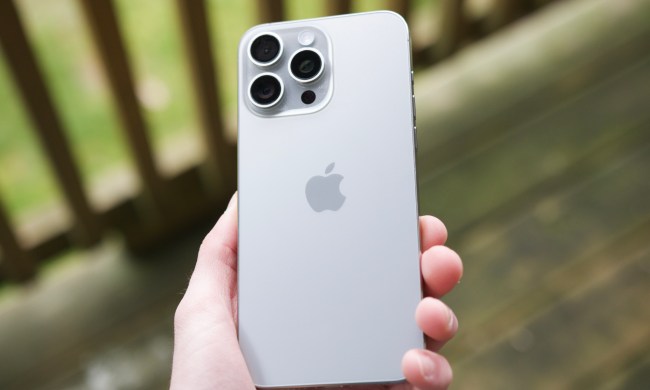
The Apple Vision Pro is one of the hottest products you can get at the moment, and every time I see a demo, I see another feature or use case that makes me very excited to try it out for myself. But then I see a photo or video of someone wearing Vision Pro outside in the real world, gesticulating wildly as they stride along — looking very muggable indeed — and it makes me sigh.
They remind me of that other popular pastime that involves a very specific hand movement because, just like it, wearing the Vision Pro is definitely something that should only take place in the comfort and privacy of your own home.
I’m ready for the Apple Vision Pro

Let’s get this straight. I am ready for the Apple Vision Pro. I’ve spent years using virtual reality headsets, trying out smart glasses, and lamenting the day Google Glass was discontinued. I don’t have any problem putting a piece of tech on my face if it gives me some cool sci-fi vibes and lets me experiment with new ways of working or interacting with the world around me.
The Vision Pro looks incredible, whether during the highly polished Apple demonstrations or the growing number of real-world experiences from eager early adopters who are beginning to show what’s possible with Apple’s headset. I want to try it out, and even if my bank manager would laugh if I tried to buy one, that won’t stop me from imagining how it would fit into my life. It’s exactly what we all want from any brand-new, futuristic piece of tech.
But Apple demonstrates the Vision Pro in enclosed spaces, and when you first put it on, it apparently tells you only to use the headset in safe or controlled areas. Now, I understand my definition of a safe area may differ from yours or Apple’s, but common sense suggests it’s not walking down the street, navigating the subway, skateboarding, or driving. Yet, we’ve seen people doing all these things and more, looking very silly, very awkward, and absolutely desperate for attention when they do.
The worst of tech, in your face
Yes, there are polished videos showing people wearing the Apple Vision Pro out in the real world, making it seem like it’s actually quite normal to do this in front of other people. But it’s not, and for proof, there’s Casey Neistat’s video of him wearing it around New York. Apparently mostly filmed for laughs, it shows the embarrassing reality of this kind of product. He knows he looks ridiculous and makes himself even more of a spectacle by wearing his hi-vis jacket, all the time neatly demonstrating how wandering about with the Vision Pro on your head is everything we already hate about smartphones but amplified.
grocery shopping, with apple vision pro pic.twitter.com/qhsBRA0LLn
— Canoopsy (@Canoopsy) February 4, 2024
Being around or stuck behind someone totally engrossed in their phone, slowly meandering along or oblivious to the world around them, is as frustrating as it is obnoxious. Now add even less awareness, plus some sudden hand movements, and you’ve got the Vision Pro. For a truly nightmarish scenario, imagine 20 or 30 people around you all gazing into space, mouths agape, while poking, pinching, and prodding into thin air as you try to get from the subway train to the exit in one piece.
That’s quite apart from how hilariously silly he looks wearing it, especially in isolation. Google Glass attracted attention, but it was never as obvious as Vision Pro is on your face. Ray-Ban Meta and other smart glasses just look like glasses. But wearing the Vision Pro in public makes you look like a confused skier in search of the piste. Well, behind your back, everyone around you is going to be taking the piste because while you think you look super cool, no one else does.
Not made for the outside world, yet

Then there’s the Vision Pro’s size, weight, face-obscuring design, and the $3,500 minimum price — making it something to be kept at home. Wearing a Rolex or other luxury watch is pretty dangerous in big cities these days, and despite being much harder to grab by criminals than the Vision Pro, they’re stolen a lot. Opening yourself up to both ridicule and a traumatic robbery just doesn’t seem worth that dopamine hit when one (and it’ll only be one) person shouts, “Oh wow, Vision Pro! You’re cool, bro!”
To be clear, all the reviewers and influencers taking the Vision Pro out and about, looking silly, are doing it so you don’t have to. They’re the ones who enjoy, no, need the attention. Plus, we as consumers should see what it’s like to use this incredible piece of new technology everywhere, but I think we’ve already seen enough to understand that using it between four walls, in relative privacy, is better. At least, it is at the moment.
we are literally in a black mirror episode pic.twitter.com/uBTWqrpHbO
— Mika 😹🫵 (@mikadontlouz) February 3, 2024
The Vision Pro today is just the beginning, and those brave souls risking public derision are showing us how transformative Apple’s spatial computing experience could be in the future when the hardware is as subtle as a pair of normal spectacles or even a contact lens, and the user interface has been refined so less physical movement will be needed. It’ll be the post-smartphone world, where we will have forgotten about holding a device in our hands and be accustomed to the digital world blending with our reality. I can’t wait.
But that day is still a long way away, and even though the Vision Pro has barely been out for a week, we’ve all got a pretty good idea that, at its core, it has at least the potential to change our lives both inside and out of our homes. But for now, if you’re going to play with it, please don’t do it where everyone can see you.



